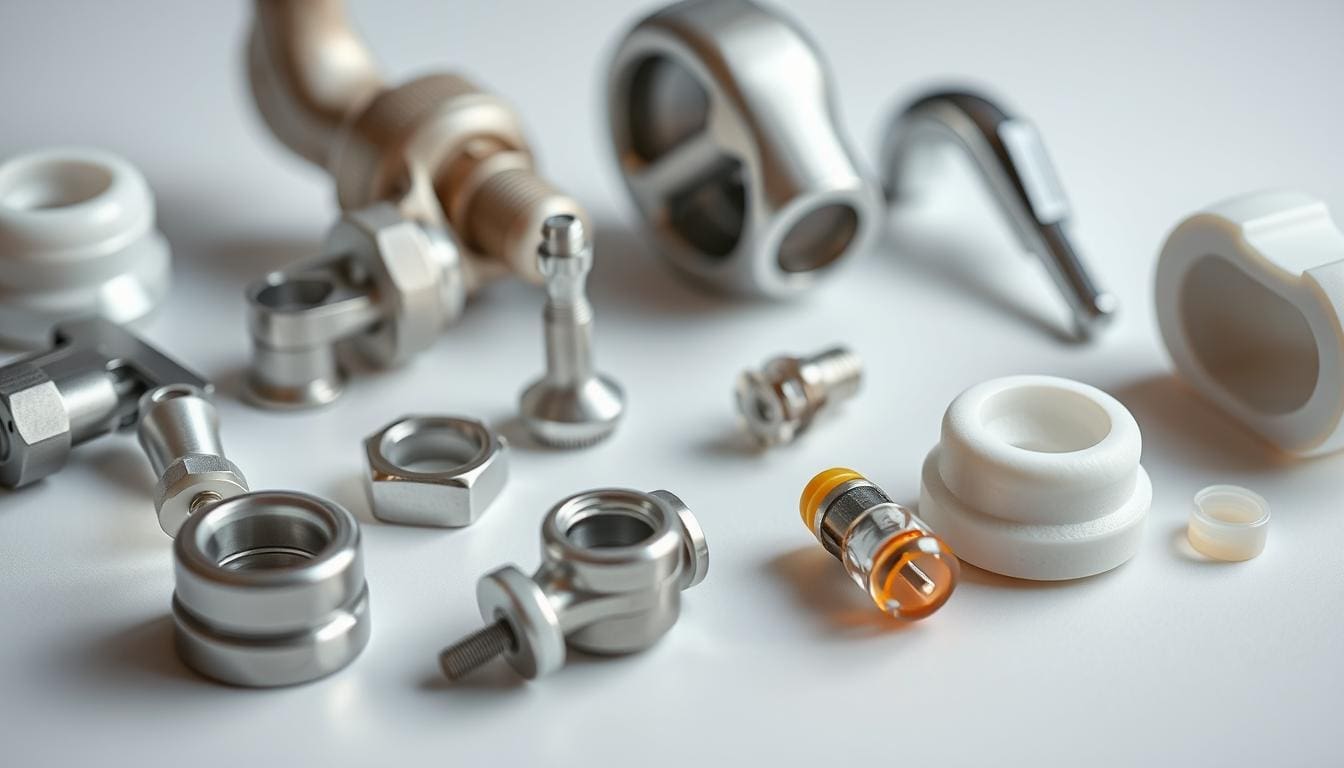Last Updated on November 26, 2025 by Bilal Hasdemir

Getting a heart stent is a major step toward improving heart health. At Liv Hospital, we focus on helping patients have a smooth heart stent recovery time home. Most patients are discharged within 24 to 48 hours after angioplasty.
During heart stent recovery time home, we guide patients on resting, gradually resuming physical activities, and following prescribed medications. Most people can return to their daily routines within a week, provided there are no complications.
For patients who recently experienced a heart attack, heart stent recovery time home may take longer—sometimes several weeks. We advise starting with light exercises, avoiding strenuous activities, and following all medical guidance to ensure a safe and effective recovery at home.
Key Takeaways
- Patients are usually discharged within 24 to 48 hours after angioplasty.
- Most patients resume normal activities within a week.
- Recovery duration varies based on individual health conditions.
- Cardiac rehabilitation is often recommended for optimal cardiovascular health.
- Adherence to antiplatelet medication is key for at least a year.
What Happens During and After Heart Stent Placement

When a patient gets a heart stent, it’s important to know about the process. This includes the stent placement and recovery. It also covers the time spent in the hospital after angioplasty.
What Is a Heart Stent and How Is It Placed?
A heart stent is a small, mesh-like device. It’s placed in a coronary artery to keep it open. The procedure, called angioplasty, uses a catheter with a balloon and a stent.
The balloon is inflated to widen the artery. Then, the stent is left in place to keep the artery open.
Key Steps in the Procedure:
- Insertion of a catheter into an artery
- Guiding the catheter to the blocked coronary artery
- Inflating a balloon to widen the artery
- Deploying the stent to keep the artery open
Insertion Methods: Arm/Wrist vs. Groin Access
The method of stent insertion can vary. Some use the arm or wrist (radial approach), while others use the groin (femoral approach). This choice can affect recovery.
| Insertion Method | Advantages | Disadvantages |
| Radial (Arm/Wrist) | Faster recovery, less bleeding risk | May not be suitable for all patients |
| Femoral (Groin) | More commonly used, easier for some procedures | Higher risk of bleeding, longer recovery |
Hospital Recovery Before Discharge
After the procedure, patients stay in the hospital. The length of stay depends on their condition and the procedure’s complexity. Medical staff watch for complications and manage pain.
Insight 1: Understanding Heart Stent Recovery Time at Home

Knowing how long it takes to recover from a heart stent is key to a smooth healing. After getting a heart stent, patients must watch their activities, take their meds, and keep an eye on their health. This helps them recover well.
Typical Recovery Timeline for Most Patients
Most people can get back to normal in about a week after the stent is placed. Doctors say, “Most patients can get back to their usual life in 7 to 10 days. But, it’s very important to follow what your doctor tells you.” They usually tell patients to avoid hard activities for a few days to a week. This helps the body heal and lowers the chance of problems at the site where the stent was put in.
When Full Recovery Can Be Expected
While you can do most daily things in a week, getting back to hard activities takes longer. The exact time can change based on your health and the details of your procedure. Things like your overall health, if there were any problems, and how well you follow your doctor’s advice can affect how long it takes to recover. A study says, “The recovery process is different for everyone, and you might need to change your plan as you go along.”
By knowing the usual recovery time and what can change it, patients can plan better. This lets them take charge of their healing. It helps them get the best results after getting a heart stent.
Insight 2: Preventive vs. Emergency Stent Recovery Differences
The recovery after a heart stent depends on why it was placed. It’s either as a preventive measure or after a heart attack. Knowing these differences helps patients set realistic goals and follow their care plans well.
Faster Recovery with Preventive Stent Placement
Those who get a stent to prevent problems often recover faster. They usually stay in the hospital for less time and get back to normal sooner. This is because their heart isn’t as damaged.
People who get a stent to prevent issues can start doing normal things in a few days or a week. But, they must stick to their doctor’s advice to recover well.
Extended Recovery After Heart Attack Stent Placement
On the other hand, those who get a stent after a heart attack take longer to get better. The damage from the heart attack slows down healing. They need more time and closer watch from their doctors.
Recovery after heart attack stent placement means healing from both the stent and the heart attack. This includes more rest, medicine, and possibly cardiac rehab. Doctors will guide them through this carefully.
Even though recovery might take longer after a heart attack, many people can get back to normal in a few weeks. The main thing is to follow their recovery plan and keep up with doctor’s visits.
In summary, whether a stent is placed to prevent problems or after a heart attack greatly affects recovery. Understanding these differences helps patients prepare for their recovery journey.
Insight 3: How the Insertion Site Affects Your Heart Stent Recovery Time Home Experience
The site where a heart stent is placed is very important for recovery. Patients often ask how the recovery will be based on the site. We will look at how different sites affect recovery time and experience at home.
Radial (Wrist/Arm) Approach Benefits
The radial approach, through the wrist or arm, is becoming more popular. It has many benefits. One key advantage is the lower risk of bleeding and vascular problems, which can mean quicker recovery. Patients often feel less pain and can get back to normal activities faster.
Femoral (Groin) Approach Recovery Considerations
The femoral approach, through the groin, might need more bed rest to avoid bleeding. Though it’s effective, it can lead to a longer recovery. It’s important for patients to talk to their doctor about their situation and how it affects recovery.
In short, the site for heart stent placement greatly affects recovery. Knowing the benefits and downsides of each approach helps patients make better choices. It’s key to talk to healthcare professionals to find the best option for each person.
Insight 4: Essential Medications During Stent Recovery
Knowing the key medications for stent recovery is vital. After a heart stent, your doctor will give you a list of medicines. These help you heal well and avoid problems.
Antiplatelet Therapy: The Foundation of Successful Recovery
Antiplatelet therapy is key for post-stent care. It stops your blood from clotting on the stent. Dual antiplatelet therapy (DAPT) is often used, combining two drugs.
How long you take these medicines varies. It depends on the stent type and your health risks. Usually, you’ll need DAPT for 6 to 12 months. Following your doctor’s advice is important to avoid clots.
Other Critical Medications After Stent Placement
Other medicines may be needed too. They help with health issues and keep your heart healthy. These can include:
- Beta-blockers: to make your heart work less and lower blood pressure.
- ACE inhibitors: to relax your blood vessels and improve blood flow.
- Statins: to lower cholesterol and prevent artery blockages.
| Medication Type | Purpose | Example Medications |
| Antiplatelet Agents | Prevent clot formation on the stent | Aspirin, Clopidogrel |
| Beta-blockers | Reduce heart workload and blood pressure | Metoprolol, Atenolol |
| ACE Inhibitors | Relax blood vessels, improve blood flow | Lisinopril, Enalapril |
| Statins | Lower cholesterol levels | Atorvastatin, Simvastatin |
It’s important to talk to your doctor about your medicines. They can explain the benefits and any side effects. Taking your medicines as directed and going to follow-up visits can help you recover well after a heart stent.
Insight 5: Physical Activity Guidelines for Safe Recovery
Recovering from a heart stent placement requires careful management of physical activity. It’s important to balance rest and the right amount of activity. This helps ensure a safe and effective recovery. We will guide you through the physical activity guidelines after stent placement.
First Week Activity Restrictions
In the first week, avoid heavy lifting, bending, and intense exercise. Stick to gentle movements and short walks. This period is key to healing without issues.
Here are some activities to avoid:
- Lifting objects heavier than 10 pounds
- Bending or straining
- Strenuous exercise or sudden movements
Gradual Activity Progression Timeline
As you get better, you can slowly increase your activity. Walking is a great first exercise to start soon after leaving the hospital. Start with short walks and gradually increase the distance and time.
Here’s a general activity progression:
- Week 1-2: Short walks (5-10 minutes), light stretching
- Week 3-4: Gradually increase walking duration (30 minutes or more), introduce gentle strengthening exercises
- After Week 4: More vigorous activities can be introduced, such as swimming or cycling, based on your doctor’s advice
Safe Exercises During Different Recovery Phases
Choose exercises that are safe and right for your recovery phase. Low-impact activities like walking, yoga, and swimming are generally recommended as they promote cardiovascular health without excessive strain on the heart.
Always talk to your healthcare provider before starting any new exercise. They can give you personalized advice based on your condition and recovery progress.
Insight 6: Cardiac Rehabilitation Benefits for Stent Patients
Recovering from a heart stent can be easier with cardiac rehab. It’s a key part of a recovery plan for stent patients. The program includes exercise, heart health education, and counseling for overall well-being.
How Cardiac Rehab Supports Recovery
Cardiac rehab is key for stent patients. It improves physical health, reduces symptoms, and boosts quality of life. Healthcare pros guide patients, helping them understand and manage their heart health.
Cardiac rehab is tailored to each patient. It considers their medical history, current health, and goals. This personal touch helps patients get the most from rehab.
Components of Effective Cardiac Rehabilitation
Good cardiac rehab includes several parts. These are:
- Exercise plans that fit the patient’s needs and goals
- Heart-healthy lifestyle education
- Counseling for stress and emotional support
These elements help patients recover fully. They address physical, emotional, and educational needs.
Home-Based vs. Center-Based Rehabilitation Options
Rehab can happen at home or in a center. Both options offer flexibility.
| Program Aspect | Home-Based Rehabilitation | Center-Based Rehabilitation |
| Location | Patient’s home | Rehabilitation center or hospital |
| Supervision | Remote monitoring by healthcare professionals | Direct supervision by healthcare professionals |
| Flexibility | High flexibility in scheduling | Fixed schedule |
Both home and center-based rehab have benefits. The choice depends on the patient’s needs and preferences. We help patients decide what’s best for them.
Nutrition and Lifestyle Adjustments for Optimal Healing
Healing well after getting a heart stent means making big changes in what we eat and how we live. We need to focus on good nutrition, drinking enough water, getting enough sleep, managing stress, and avoiding bad habits. These steps help our hearts stay healthy.
Heart-Healthy Diet Recommendations
Eating right is key after getting a heart stent. Here’s what we should do:
- Fruits and Vegetables: Eat a variety to get lots of vitamins and minerals.
- Whole Grains: Pick whole grains for more fiber.
- Lean Proteins: Eat lean meats, fish, and legumes.
- Healthy Fats: Nuts, seeds, avocados, and olive oil are good fats.
We should also cut down on saturated fats, trans fats, sodium, and added sugars. Try to eat less processed food, which often has these bad ingredients.
Hydration and Its Importance
Drinking enough water is very important, even more so when we’re recovering. Drinking plenty of water helps our body work properly and keeps blood flowing well. We should drink at least 8 cups (64 ounces) of water every day.
Sleep and Stress Management Techniques
Getting enough sleep and managing stress are big parts of getting better. Try to sleep 7-8 hours each night to help your body heal. For stress, meditation, yoga, and deep breathing can really help. They not only lower stress but also make us feel better overall.
Smoking Cessation and Alcohol Limitations
Stopping smoking and drinking less alcohol are big steps for heart health. Quitting smoking greatly lowers the risk of heart problems. There are many ways to quit, like counseling and medicine. For alcohol, drinking in moderation is best; it helps prevent heart disease.
By changing our diet and lifestyle, we can help our heart heal after a stent. It’s all about living healthier to feel better overall.
Warning Signs and When to Seek Medical Attention
After getting a heart stent, knowing the warning signs is key. Recovery is usually easy, but being informed helps a lot. We’ll cover normal and abnormal symptoms, emergency situations, and what to talk about with your doctor.
Normal vs. Abnormal Symptoms During Recovery
Recovery might bring some discomfort, bruising, or swelling where the stent was placed. But some symptoms mean you might have a problem. Abnormal symptoms that need attention include:
- Chest pain or discomfort that spreads to your arm, back, or jaw
- Shortness of breath or trouble breathing
- Dizziness or fainting
- Severe fatigue or weakness
- Unusual bruising or bleeding at the insertion site
Don’t ignore abnormal symptoms after stent placement. If you notice any, get medical help right away.
Emergency Situations Requiring Immediate Care
Sometimes, symptoms can turn into emergencies that need quick medical help. If you have any of these, call for emergency services or get someone to take you to the ER:
- Severe chest pain or pressure
- Confusion or trouble speaking
- Severe headache or weakness on one side of the body
- Rapid or irregular heartbeat
These emergency situations after angioplasty are rare but serious. They can be deadly if not treated fast.
Follow-up Appointments: What to Discuss With Your Doctor
Going to follow-up appointments after stent placement is important. It helps your doctor check on you and adjust your treatment if needed. Talk about any symptoms, even if they seem small. It’s also a chance to:
- Review your medication
- Talk about lifestyle changes or concerns
- Ask any questions or share fears about recovery
Being proactive and informed helps your recovery go smoothly. Remember, your healthcare team is there to help you all the way.
Conclusion: Embracing Life After Heart Stent Recovery
After a heart stent placement, patients can get back to their usual activities. They can also enjoy a better quality of life. It’s key to keep making choices that are good for your heart long-term.
Research shows that making lifestyle changes after a stent can greatly improve heart health. Eating well, staying active, and managing stress can help. These actions lower the risk of future heart problems and help you live well after a stent.
It’s important to stick with these changes for a successful recovery. We urge patients to keep focusing on their heart health. This way, they can use their initial recovery to build a healthier future.
FAQ
How long is the recovery time for a heart stent?
Recovery time for a heart stent varies. Most can get back to normal in a week. Full recovery usually takes a few weeks.
What is the difference in recovery between a preventive stent and an emergency stent placement?
Preventive stent recovery is faster. Emergency stent recovery after a heart attack takes longer.
How does the insertion site affect the recovery experience at home?
The site of insertion impacts recovery. The radial approach allows for quicker mobility.
What medications are essential during stent recovery?
Antiplatelet therapy prevents clotting on the stent. Other meds manage related health issues.
What are the guidelines for physical activity during recovery?
Patients need to rest and gradually increase activity. Follow guidelines for safe exercise during recovery.
What is the role of cardiac rehabilitation in stent recovery?
Cardiac rehab offers a structured program. It includes exercise, education, and lifestyle counseling to improve heart health.
What lifestyle adjustments are recommended for optimal healing?
Eat heart-healthy, stay hydrated, manage stress, and avoid tobacco. These support recovery and long-term heart health.
What are the warning signs that may indicate complications after stent placement?
Watch for chest pain, shortness of breath, or severe bleeding. Seek medical help if these symptoms occur.
How long does it take to recover from a stent operation?
Recovery from a stent operation varies. Most return to normal routines in a few weeks.
What is the recovery time after a stent is placed in the heart?
Recovery time after a heart stent placement is a few days to weeks. It depends on individual factors.
How long to recover from a heart stent procedure?
Recovery from a heart stent procedure is about a week for daily activities. Full recovery takes a few weeks.
References
- Rassaf, T., Steiner, S., & Kelm, M. (2013). Postoperative care and follow-up after coronary stenting. Dtsch Arztebl International, 110 (5), 72-82. https://www.ncbi.nlm.nih.gov/pmc/articles/PMC3576602/
- Shroff, A., Gilchrist, I., Caputo, R., Bertrand, M., & Pancholy, S. (2016). Same-day discharge after percutaneous coronary intervention. JAMA Cardiology, 1 (3), e160141. https://jamanetwork.com/journals/jamacardiology/fullarticle/2506675






